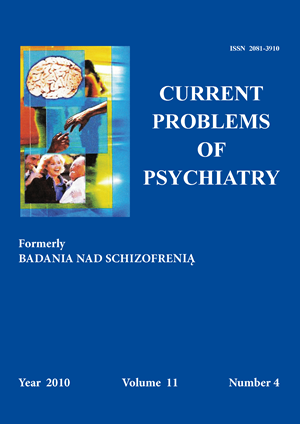WiDi Technology in Family Life
Keywords:
WiDi Technology, TV, Internet, FamilyAbstract
Communication channels constitute the basis for the culture change, a new quality in the domain of interper-sonal relations and social activity. Each innovation introduced into the communication sphere, according to Marshall McLuhan’s theory of technological determinism, changes the lifestyle of an individual and of a community, including the family. The turn of XX and XXI century was a kind of competition between traditional media (television among them) and new media (Internet and the mobile phone). New technological solutions which try to combine different kinds of media come into use and in a new way influence culture and the lifestyle of an individual and the family
References
1. http://www.heise-online.pl/newsticker/news/item/Techno logia-Wireless-Display-wkracza-do-Europy-980616.html (read 28 November 2010r.).
2. Research carried out by Pew Centre‟s Internet and American Life can be found on www.pewinternet.org
3. Cwalina W. Generacja Y – ponury mit czy obiecująca rzeczywistość. in: T. Zasępa (ed.), Internet. Fenomen społeczeństwa informacyjnego. St Pauls Edition; Częstochowa: 2001, p. 33.
4. Strasburger V.C., Wilson B.J., Jordan A.B. Children, Adolescents and the Media. Los Angeles; SAGE Publications: 2009, p. 6-8.
5. Pew Internet & American Life Project Networked Family Survey, http://www.pewinternet.org/pdfs/PIP_Networked_Fa mily.pdf
6. Towards a safer use of the internet for children in the EU – a parents‟ perspective. Conducted by The Gallup Organization, Hungary upon the request of Directorate General Information Society and Media, Flash EB Series #248. 2008. Eurobarometer research at the request of The European Commission since 1973. Methodology is the same every edition: in every member state of EU individual interviews are carried out (face-to-face) on a representative group of 1000 adults chosen at random. Report published on the website: http://ec.europa.eu/information_society/activities/sip/eu robarometer/index_en.htm
7. Flew T. New media. Oxford University Press; Oxford: 2008, p. 96-98.
8. Jęczeń J. Nowe technologie – nowa komunikacja w rodzinie. Roczniki Teologiczne, 2009; LVI(10): 121-137.
9. Strasburger V.C., Wilson B.J., Jordan A.B. Children, Adolescents and the Media. p. 6-7, 108, 501.
10. SAFT research (Safty Awerness Facts Tools) authors T. Bjørnstad, T. Ellingsen, E. Staksrud, research carried out in 2002–2004 in five EU countries: Norway, Sweden, Denmark, Island and Ireland. Te two groups of respoendedns were surveyed – children age 6 – 16 using the Internet (N=4754 people) and parents of the children age 6 – 16 who have the Internet access (N=3213) The survey used quantitative methods (telephone questionnaire – parents, auditoria questionnaire – children) and qualitative methods (individual interviews – parents / children, group interviews – children and observations – children) Detailed description of methodology can be found on SAFT website: www.saft.online.org
11. The Use of New Media by Children, A research report for the Internet Advisory Board (2004), Amárach Consulting, http://www.iab.ie/Publications/Research/d63.PDF.
12. Harris L. & Associates. Sexual material on American network television during the 1987-88 season. Planned Parenthood Federation of America; New York: 1988.
13. Eveland W.P., Detenber A.I., Nathanson A.I., McLeod D.M. Tethinking the social distance corollary: Perceived likelihood of exposure and the third-person perception. Communication Research, 1999; 26: 275-302.
14. Gentile D.A., Walsh D.A. A normative study of family media habits. Journal of Applied Development Psychology, 2002; (23): 157-178.
15. Rideout V.J., Hamel E. Zero to six; Electronic media in the lives of infants, toddlers, and preschoolers. Menlo Park, CA; Kaiser Family Foundation: 2006.
16. Buchamn D. D., Funk J. B. Video and computer games in the „90s: Children‟s time commitment and game preference. Children today, 1996; (24): 12-15. 31.
17. Pratchett R. Games in the UK: Digital play, digital life-style. London; BBC. Retrieved July 26, 2006; http://open.bbc.co.uk/newmediaresearch/files/BBC_UK_Games_Research_2005.pdf
18. Livingston S. Bober‟s M. resserach were conducted in the span of UK Children Go Online project, between April 2003 and April 2005, test sample 1511 age 9 – 19 and 906 parents of the childrem of 9 – 17. In the survey qualitative methods were used (computer assisted per-sonal interviewing – CAPI) and qualitative methods (observations and group and individual interviews). Description of methodology and the results can be found on the website: www.children-go-online.net.
19. Jęczeń J. Rodzina i bezpieczny Internet. in: Gorbaniuk J., Parysiewicz B. (ed.), Rodzina wobec współczesnych wyzwań społeczno-kulturowych. KUL Publishing House; Lublin: 2009, p. 66-71.
20. Jęczeń J. Cyber-exploitation in Family Life. Curr. Probl. Psychiatry 2010; 11(3): 219-223.
21. Willard N.E. Cyberbullying and cyberthreats: responding to the challenge of online social aggression, threats, and distress. USA: 2007, p. 5-14.
22. Jęczeń J. Family and the Safe Internet. p. 72-73.
23. Jęczeń J. Wspólnototwórcza rola środków społecznego przekazu w rodzinie. in: Tomkiewicz A., Wieczorek W. (ed.), Rodzina jako Kościół domowy. Lublin; KUL Publishing House: 2010, p. 613-624.
24. John Paul II. Orędzie na XXIII Światowy Dzień Środków Społecznego Przekazu pt. „Religia w środkach przekazu”. Vatican: 1989.
25. Drożdż M. Osoba i media. Personalistyczny paradygmat etyki mediów. Biblos; Tarnów: 2005, p. 221-265.
26. Jęczeń J. Mass media w służbie caritas. Refleksja na kanwie encykliki Benedykta XVI Deus caritas est. Rocz. Teolog., 2007; LIV(10): 192.


